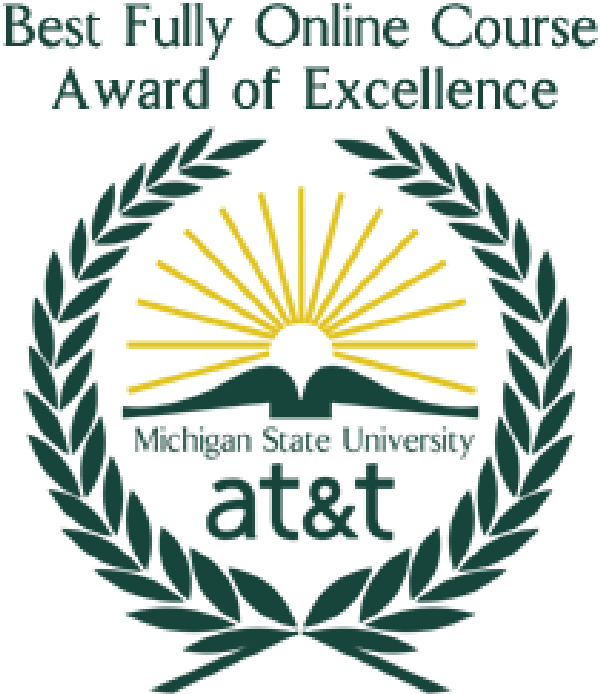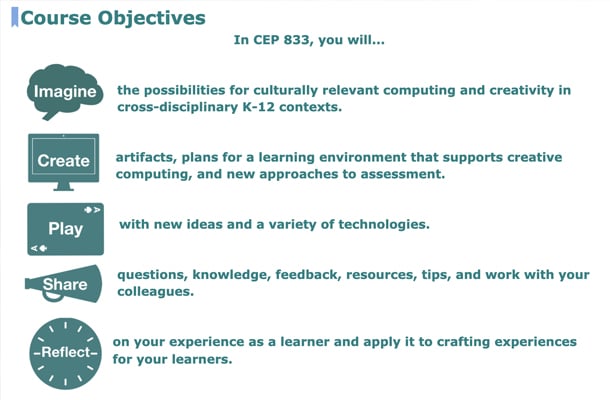CEP 833: Creativity in K-12 Computing Education is offered as an elective in the Master of Arts in Educational Technology program and is one of the required courses for the Graduate Certificate in K-12 Computer Science Education. This fully online course was offered for the first time in Summer 2019 and runs on an accelerated 7-week schedule. Students in the course range from having no programming skills to teaching AP Computer Science.
The course focuses on the intersections between creativity and computing in cross-disciplinary K-12 contexts and subject areas. The learning objectives are outlined in the following way:
- Imagine the possibilities for culturally relevant computing and creativity in cross-disciplinary K-12 contexts.
- Create artifacts, plans for a learning environment that supports creative computing, and new approaches to assessment.
- Play with new ideas and a variety of technologies.
- Share questions, knowledge, feedback, resources, tips, and work with your colleagues.
- Reflect on your experience as a learner and apply it to crafting experiences for your learners.
The course is structured using the Creative Learning Spiral (Resnick, 2007): Imagine, Create, Play, Share, and Reflect. Students experience and apply the spiral as a framework to support creativity in computing environments throughout the course.
Students start each unit actively by “imagining and creating” through a Creative Computing Quickfire. In these quickfires (Wolf, 2009), students have a defined goal, tool, and time limit. They engage in creating a computational artifact with that tool or programming language and authentically experience the big ideas that are uncovered in the following phases of the spiral.
Students then move onto “playing and sharing” by digging into a larger theoretical framework, mindset, or concept. The content is connected back to their quickfire experience to reveal the big ideas that they experienced firsthand.
“Reflecting” comes next for students through Computational Conversations, which aim to expand perspectives regarding access to computer science that emerges at the intersection of creativity and computing. Students process their thoughts in their Developer’s Notebook and then dialogue about them with others in the course’s Slack workspace.
For the culminating weekly assignments, students return to the Creative Learning Spiral for another iteration of the week’s experiences and content, only this time through the lens of their professional context. Using the spiral, they produce a relevant, open-ended artifact that incorporates a creative application of the technology and theoretical ideas from the week into their design.
Technology Used
- D2L
- Slack
- Google Slides
- Google Docs
- Scratch
- SonicPi
- Trinket
- Micro:bit
- OpenProcessing
- Student-selected technology
Team Members
- Bill Marsland
- Candace Robertson

